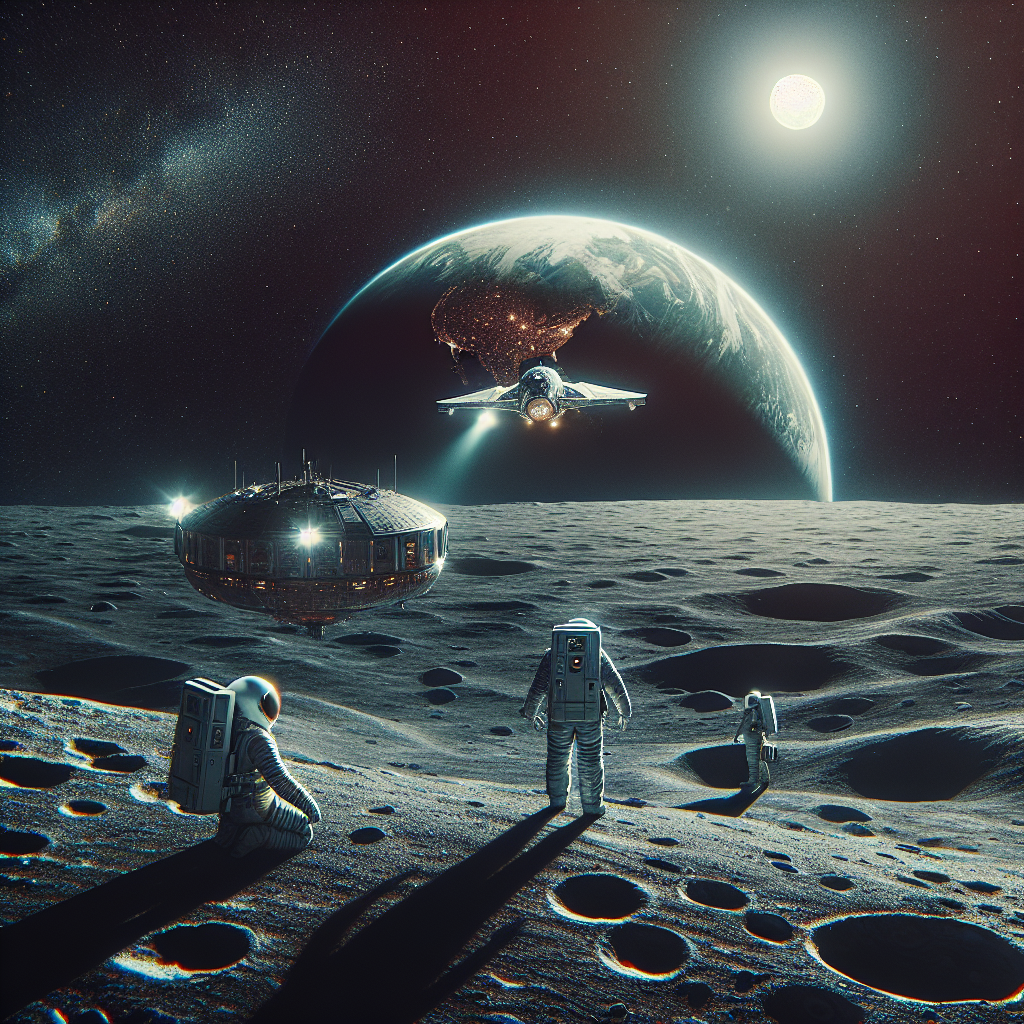Imagine us, out here in the quiet desert, the universe unfolding above. The stars are not just points of light but are beacons of stories, of adventures yet to come. Tonight, let’s talk about one such narrative that’s currently unfolding not just above us but also beyond us—NASA’s Artemis Program.
What Is NASA’s Artemis Program?
The Artemis Program, named after the twin sister of Apollo in Greek mythology, is NASA’s ambitious plan to return humans to the Moon and establish a sustainable presence there. It’s not just about planting flags and footprints; this is about setting the stage for more extensive exploration to Mars and beyond. The program aims to land the first woman and the next man on the Moon by the mid-2020s, focusing on the lunar South Pole—a place where no human has ever gone.
Why the Moon Again?
You might wonder, with stars in your eyes, why tread again on the moonlit paths we walked half a century ago? The answer lies not in the steps already taken but in the possibilities that those steps unveil. The lunar South Pole holds vast reserves of ice within its craters—ice that could be converted into water, oxygen, and even rocket fuel. By learning to utilize these resources, we prepare ourselves for the longer journeys of tomorrow.
Artemis I: The First Giant Leap
Artemis I is the first uncrewed test flight in the series, designed to ensure that the Space Launch System (SLS), the most powerful rocket ever built, and the Orion spacecraft are ready for human passengers. Picture it launching into the night, piercing the quiet sky with a promise of dawn. Although it carries no crew, it’s laden with scientific experiments and dummies equipped with sensors, to measure what future astronauts will experience.
Artemis II and Beyond
While Artemis I tests the waters, Artemis II will be the first crewed mission, looping around the Moon, drawing a celestial arc of human courage and curiosity. It’s like that first moment when you see the Milky Way—there’s fear in the vastness, but a thrill in the journey. And beyond that, Artemis III aims to touch the lunar surface, where astronauts will step out, not just onto the Moon, but into a broader universe of possibilities.
The Gateway: A Lunar Outpost
Part of what makes the Artemis program a beacon of modern space exploration is the Gateway. This lunar orbiting station will serve as a multi-purpose outpost orbiting the Moon, providing essential support for long-term human return to the lunar surface and serving as a staging point for deep space exploration. Imagine it as a campfire, around which future explorers will gather, share stories, and plan their next adventures into the cosmic dark.
As we sit here, under the cosmos that has watched over every human epoch, the Artemis program is not just a journey to another celestial body. It is a bridge to a future where the Moon is just a step, Mars a milestone, and the stars—endless possibilities.
Connecting to the Cosmos
For those of us drawn to the night sky, every mission into its depths rekindles the wonder of that first starry night. The Artemis program is our next chapter, not just in space travel but in understanding our place in this grand tapestry. And as we venture forth, let’s carry with us the awe, the curiosity, and the communal spirit of looking up and dreaming together.
If you’re intrigued by the mysteries and mechanics of cosmic phenomena, consider exploring What Would Happen If You Fell Into a Black Hole?, where the enigmatic journey of falling into a black hole blends science with the poetry of the cosmos.


